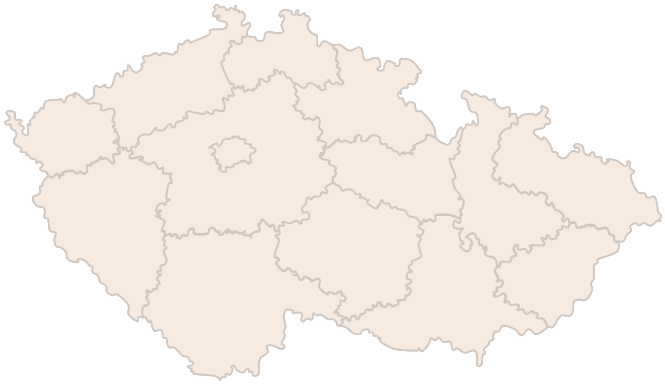What is turnover: the difference between turnover for VAT and turnover in accounting
In common parlance, we call almost any kind of sales turnover. But the law works with precise terms. For VAT, turnover is governed by the VAT Act and means the total of the payments, excluding tax (i.e. VAT), that you are entitled to for transactions with a place of supply in the country. This includes taxable supplies, exempt supplies with a right to deduct and some exempt supplies without a right to deduct, unless they are just occasional ancillary activities.
In contrast,net turnover in accounting is an accounting concept from the accounting regulations. From 2024 onwards, for accounting purposes, net turnover means revenue from the sale of goods and services for an accounting period (with additional special features for specific entities). This is a completely different figure and resultant number than turnover for VAT and often leads to confusion when the two figures are confused.
Are you solving a similar problem?
Not sure how to do your taxes properly so you don't get it wrong?
We can help you navigate the law, whether it’s dealing with a specific tax situation, preparing for an audit by the tax authority or defending yourself in court.
I want to consult
- When you order, you know what you will get and how much it will cost.
- We handle everything online or in person at one of our 6 offices.
- We handle 8 out of 10 requests within 2 working days.
- We have specialists for every field of law.
Compulsory VAT registration: when you become a taxpayer
Newly (from 1 January 2025), turnover for compulsory VAT registration is calculated per calendar year (January-December). Two new thresholds have also been introduced:
- cZK 2,000,000 per calendar year: once you exceed this turnover in a given year, you become a taxable person from 1 January of the following year, unless you notify the tax authorities in time that you want to become a taxable person earlier. You must apply within 10 working days from the date you exceeded the limit.
- cZK 2,536,500 per calendar year: if you exceed this higher limit in the same year, you become a taxpayer on the day after you exceed it and the 10 working day application deadline applies again.
The first limit therefore “transfers” you to payership on 1 January of the following year, the second limit triggers payership almost immediately.
What exactly belongs to VAT turnover and what does not
The VAT turnover is the sum of all payments, excluding tax, due to the taxable person for supplies made with the place of supply in the Czech Republic. This includes:
- Taxable supplies (i.e. what is subject to VAT and not exempt)
- Exempt supplies with a right to deduct – typically the supply and acquisition of goods within the EU, the import and export of goods including directly related transport and services, the supply of services to a third country or the transport of persons.
- Exempt supplies without deductibility where the supply is not an occasional ancillary activity but part of a normal economic activity (assessed, for example, by the ratio of ancillary to main income) – in particular financial, pension and insurance activities, supply of immovable property and rental of immovable property.
The law also lists what is not included in turnover for VAT purposes:
- Certain exempt supplies without the right to deduct – typically education and training, health services and the supply of medical goods, social assistance or gambling.
- Payment for the supply or provision of fixed assets, unless such sales are an integral part of the normal business (e.g. a one-off sale of company machinery by a company that does not normally sell machinery).
- Charges with place of performance outside the country.
- Advances received – these are included in turnover only on the date of the transaction.
Consideration means a sum of money or the value of non-monetary consideration given in direct connection with the performance. This includes price subsidies (e.g. a grant that reduces the price of admission for a customer) but not profit and loss subsidies or subsidies for the acquisition of fixed assets.
Practical experience: how to calculate VAT turnover from your data
The following procedure works well in practice. First, filter all transactions made in the Czech Republic for the current calendar year from your accounting or tax records, always in amounts excluding VAT and by the date of the transaction. Then exclude sales of fixed assets, one-off additional activities and transactions with place of performance outside the Czech Republic.
Compare the result with the limits of CZK 2 000 000 and CZK 2 536 500. If you are around the thresholds, keep track of your turnover at least monthly and if you are in danger of exceeding the higher limit, prepare to register immediately.
Model example with numbers: artisanal non-payer in 2025
Imagine a carpenter who invoices without VAT in the Czech Republic in 2025 (he is a non-taxpayer) and in January-September reaches successively 1.85 million CZK. In October, he issues orders for CZK 230,000 and in November another CZK 500,000 (all in the Czech Republic, excluding VAT). In October , he exceeds CZK 2,000,000, so he must apply for registration within 10 working days. If he does not declare that he wants to become a taxpayer earlier, he will become a taxpayer on 1 January 2026. However, in November he will already exceed CZK 2,536,500, and thus he will legally become a taxpayer from the day after he exceeds it – i.e. immediately in November. And again, he has 10 working days to apply for VAT registration. So he has exceeded both limits in one year, triggering the earlier emergence of taxable status.
Common mistakes: when there is an excess or a shortfall in turnover
Very often we are confronted with the idea that if money has not arrived in the account, it does not count towards VAT turnover. This is not true – it is the transaction that counts, not the collection.
A second common misconception is to include the sale of fixed assets (such as company supplies) even though they are not usually included in turnover, unless car sales are your typical business.
A third mistake is the imputation of services with a place of performance outside the Czech Republic (typically the provision of services to an EU company where the place of performance is the customer’s country). This is not included in domestic turnover.
Where to check if someone is a VAT payer and where to find out the turnover of a company
You can check if you are a VAT payer in the VAT register on the My Taxes portal. Here you can find out whether the entity is a VAT payer, an identified person or an unreliable payer and what accounts it has reported to the tax authorities. However, you cannot read the turnover from the register – the register of taxpayers is only used to verify the VAT status.
Tip for article
The next article will tell you what you can find in the VAT register.
To find out the annual turnover of the company (sales), you need to consult the financial statements published in the Collection of Deeds of the Public Register at Justice.cz. Business corporations are required to publish financial statements, but micro and small unaudited entities are not required to publish a profit and loss statement, so in some cases you won’t see sales.
The ARES (Administrative Register of Economic Entities) is then an official search engine that aggregates data on entities from multiple state registers (including the public register), but again, it doesn’t show turnover – but it’s great for quickly checking basic identification data, VAT numbers and linking to extracts from registers.
Summary
Turnover for VAT is the sum of payments excluding VAT for supplies with a place of supply in the Czech Republic (taxable supplies, exempt supplies with a claim and some without a claim). As of 1 January 2025, turnover is assessed on a calendar year basis and two limits apply: if you exceed CZK 2,000,000, you become a taxpayer as of 1 January of the following year (the application must be submitted within 10 working days), and if you exceed CZK 2,536,500, you become a taxpayer on the day after exceeding it (again with a 10-day deadline).
The turnover includes the price subsidy. It does not include selected exempt transactions without entitlement (e.g. education, health and social services, gambling), one-off sales of fixed assets outside the ordinary course of business, transactions with a place of business outside the Czech Republic and advances received until the time of the transaction.
You can verify your taxpayer status in the VAT register on the My Taxes portal, annual sales (if published) in the collection of documents on the Justice.cz portal and basic identification in ARES.
Frequently Asked Questions
What is the turnover of a company?
Generally, it’s sales. In practice, look for them in the income statement (profit and loss statement) in the Collection of Deeds at Justice.cz, if the company is required to publish the statement. You will not be able to tell if you are liable for VAT from these statements, this needs to be checked with the VAT register.
Does the possibility of being a quarterly taxpayer affect the turnover for VAT?
Yes. From 2025, you can choose a quarterly tax period if your domestic turnover in the previous calendar year did not exceed CZK 15 million. CZK and you meet other conditions.
When is the sale of fixed assets not included in turnover?
If the sale of fixed assets is not an integral part of your normal economic activity (e.g. a one-off sale of a company van to a joiner).
Can I read the turnover from the VAT register?
No. The register is used to verify status (taxpayer/IO/unreliable, accounts), not to publish sales.




